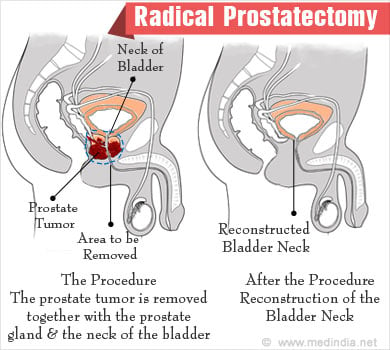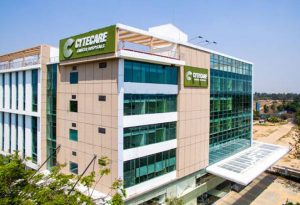Prostate Removal Surgery: What You Should Know
Prostatectomy, also referred to as prostate removal surgery, is used as a form of treatment for conditions that may affect the prostate. It is a surgical procedure performed to remove part or the entire prostate. Whether it is carried out alone or in combination with other cancer treatment options, prostatectomy is used to treat localized prostate cancer. Read More
Top Doctors For Prostate Removal Surgery: What You Should Know Treatments
Top Hospitals For Prostate Removal Surgery: What You Should Know Treatments
Prostate Removal Surgery: What You Should Know
Table of contents
Overview
Located just below the urinary bladder, the prostate gland is found in the pelvis of males. The prostate gland surrounds the urethra, which is responsible for transporting urine to the penis through the bladder. In addition, this walnut-sized gland is responsible for secreting a fluid that nourishes and helps transport the sperm. Prostate cancer occurs when there is an uncontrollable growth of cells in the prostate of the male reproductive system.
In its early stages, prostate cancer can be treated. Treatment options include surgery, radiation therapy, chemotherapy, immunotherapy, targeted therapy, and hormonal therapy. It is important to know the effect of these treatment options on fertility.

What is Prostatectomy (Prostate Removal Surgery)?
When invaded by cancer cells, a procedure called prostatectomy removes all or part of the prostate gland. Prostatectomy, also referred to as prostate removal surgery, is used as a form of treatment for conditions that may affect the prostate. It is a surgical procedure performed to remove part or the entire prostate. Whether it is carried out alone or in combination with other cancer treatment options, prostatectomy is used to treat localized prostate cancer.
Oftentimes, before a prostatectomy is carried out, a prostate biopsy has to be performed. A prostate biopsy involves taking a tissue sample from the prostate gland. The biopsy can be done by employing any of the following methods:
- the perineal method, which is done via the skin between the scrotum and the rectum,
- the transrectal method is performed through the rectum, or
- the transurethral method is performed with the use of a cystoscope via the urethra.
Types of Prostatectomy (Prostate Removal Methods)
A prostatectomy can last for as long as two hours and requires placing the patient on anesthesia. The procedure involves the surgeon accessing the prostate by making a tiny incision, after which the prostate is removed. The incision can be done either by
- retropubic or suprapubic method – this incision is done via the lower abdomen, or
- perineum method – in this method, the skin between the scrotum and the rectum is incised.
Then the bladder and the urethra are reconnected, and a catheter is also connected to the bladder. The catheter will help with draining urine as healing takes place.
Radical Prostatectomy

The way prostatectomy is carried out is determined by the condition affecting the prostate. A type of surgery done to remove the prostate completely is called radical prostatectomy. Radical prostatectomy is also used to remove the lymph nodes surrounding the prostate gland and the seminal vesicles.
Radical prostatectomy is conducted to remove the prostate when it has been invaded by cancer. But it can also be used when an individual:
- is bleeding recurrently from the prostate,
- has bladder stones with enlarged prostate,
- is unable to empty the bladder, etc.
Techniques that may be used during a radical prostatectomy are an open or robot-assisted radical prostatectomy.
Open Radical Prostatectomy
Also referred to as laparoscopic radical prostatectomy, this technique involves making an incision in the patient’s lower abdomen. It is done by using traditional tools and incisions which the surgeon employs to reach the prostate and remove it. During the surgery, an incision is made from below the navel to just above the bone of the pubic. The surgeon meticulously dissects the prostate gland from the neighboring blood vessels and nerves. Then the prostate and surrounding tissue are removed. Sutures are then used to close the incision.
Robot-assisted Radical Prostatectomy
This technique requires the use of a robot (computer-assisted mechanical device). By using a console connected to the robot, the surgeon is able to make precise incisions of about five to six in the lower abdomen of the patient to remove the prostate.
At the operating table, the surgeon controls the console with a remote. The surgeon takes precision and care by using two hand-and-finger control devices to control the movements of the surgical instruments. Compared to traditional laparoscopic surgery, the surgeon can view the procedure in much more detail thanks to the console’s magnified 3D image of the operating area.
For some men, the robotic system’s smaller, more precise incisions result in a quicker recovery than traditional open surgery does. In addition, similar to open retropubic surgery, this approach provides nerve-sparing methods that, in the right candidate, may retain both sexual potency and continence.
Other methods of radical prostatectomy are discussed below.
Radical prostatectomy with retropubic (suprapubic) approach –
Commonly used by urologists, this method can be used if cancer has invaded the lymph nodes. An incision is made that extends from your pubic bone to just below your belly button to remove the prostate, vas deferens, seminal vesicles, and the lymph nodes surrounding the prostate.
A “nerve-sparing” technique can also be used alongside this procedure. If this is the case, the nerves required to sustain an erection are left uncut. Keeping the nerves intact may be impossible if they have been invaded by cancer.
Open radical perineal prostatectomy
This is a less commonly used technique. Compared to radical prostatectomy with a retropubic approach, this method is less time-consuming, and only causes reduced blood loss. It does not involve removing the lymph nodes unless with the use of another procedure. By making an incision through the skin between the scrotum and the anus, the prostate is removed.
A radical prostatectomy poses certain risks, such as:
- bleeding
- lymphocele (formation of lymph-containing cysts)
- urinary tract infection
- erectile dysfunction
- loss of bladder control (urinary incontinence)
- narrowing of the urethra
- urinary leakage
Simple Prostatectomy

Simple prostatectomy is a minimally invasive procedure performed with the use of a robot to remove the faction of the prostate that is obstructing the flow of urine. It may not be used to remove the prostate entirely. However, men who have benign prostatic hyperplasia (enlarged prostate glands) and severe urinary problems may occasionally benefit from a simple prostatectomy. It can also be used to fix hernia or bladder conditions.
Before the start of a simple prostatectomy, a cystoscope may be inserted into the body of the patient. This is a long, flexible tube that is passed through the penis to enable the surgeon to view the bladder, urethra, and prostate area clearly. When this is done, urine is drained from the body with the aid of a Foley catheter that is inserted through the penis to the bladder. The location of incisions made in this process determines the approach to be used by the surgeon.
After the surgery to remove the prostate, temporary tubes meant to drain the urine will be inserted near the surgery area. One tube, called the suprapubic tube, is placed in the bladder, while the pelvic drain tube is put in the area where the prostate used to be.
Removing the prostate through this surgery helps to provide long-term relief with the following:
- difficulty experienced before the urine starts to flow
- inability to urinate
- a frequent and urgent need to urinate
- a slow and extended urination
- intermittent urination
- urinary tract infection
- the feeling of not emptying the bladder when urinating
As with radical prostatectomy, a simple prostatectomy also has its risks, and they include the following:
- bleeding
- dry orgasm
- urinary tract infection
- erectile dysfunction
- loss of bladder control (urinary incontinence)
- narrowing of the urethra
- rectal injury
Preparing for a Surgery to Remove Prostate
Before commencing surgery, a cystoscopy is conducted on the patient by the doctor to examine the size of the prostate and the urinary system. A cystoscopy enables the doctor to view the urethra and bladder with the use of a visual scope. In addition, your doctor might order another test, like blood tests or assessments of your prostate and urine flow.
It is important to inform the doctor of,
- any medication such as blood-thinning medications one might be taking,
- allergies or reactions to any medication,
- whether or not one is fasting.
The doctor will also do the following:
- explain the entire procedure,
- ask the individual to sign a consent form approving the procedure,
- conduct a physical examination such as blood tests, ultrasound of the prostate, etc., on the patient,
- ask the individual to fast for eight hours before the surgery,
- specific preparation will be requested by the doctor depending on the individual’s medical condition.
This information will help the doctor in giving specific instructions to the patient before commencing the prostate removal surgery. Also, a kit may be given to the patient containing an enema. This is to be used to cleanse or help with emptying the bowels.
After the Surgery
The patient may need to stay in the hospital for monitoring after the surgery. This is because it is not advised that the patient engages in strenuous activities after the surgery.
When the IV is removed from the patient, medications to help with the pain will be prescribed for use by the doctor. The doctor will recommend that the patient does some easy exercises that involve moving the legs.
The patient may be allowed to go home a day after the surgery with a catheter in place, depending on his condition.
The patient will need to go for follow-up appointments after one or two weeks for the staples to be taken out and some months after. Full control of the urinary may happen a year after the surgery.
Patients need to know that beginning their daily routine is a gradual process as their body adjusts to the new change. This may take four to six weeks. When it comes to sexual activity, after going through a simple prostatectomy, the patient may produce little or no semen. If the patient had a radical prostatectomy, it might take 18 months for full erectile function recovery.
Side Effects of Prostate Removal Surgery
Side effects of prostatectomy may include:
- urinary incontinence
- erectile dysfunction
- fever
- chills
- redness of the incision area
- swelling of the incision area
- bleeding of the incision site
- increasing pains in the incision area
- difficulty urinating when the catheter is removed
- difficulty moving the bowel
Finally, when cancer is found confined to the prostate gland, surgery is performed to help cure the prostate cancer. When at the early stage, prostate cancer can be cured by performing prostate removal surgery (prostatectomy). It can be done using several techniques where an incision is made either by retropubic or perineum method. After the surgery, the patient will need a follow-up appointment to see the doctor. This will help checkmate any side effects that may occur after the surgery.
































































































